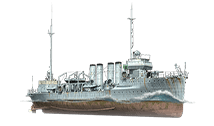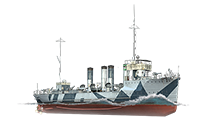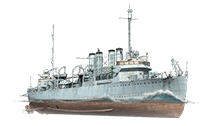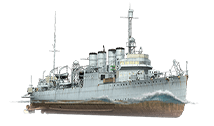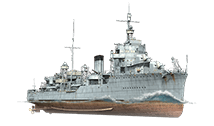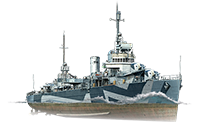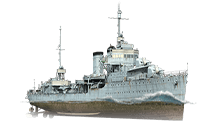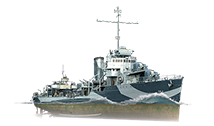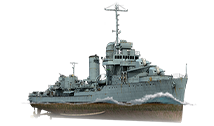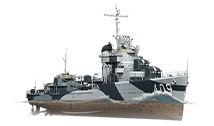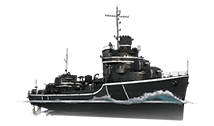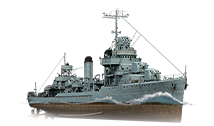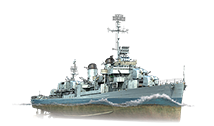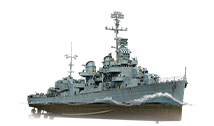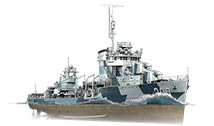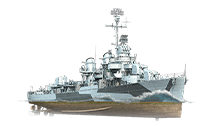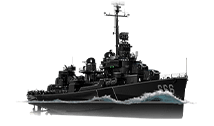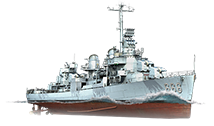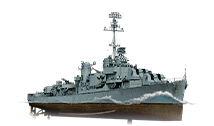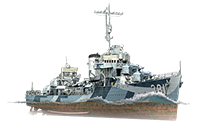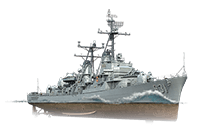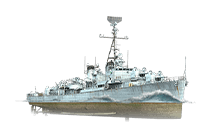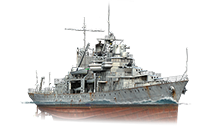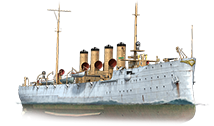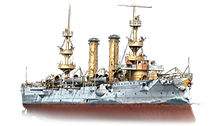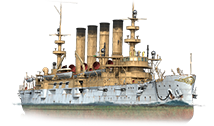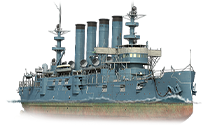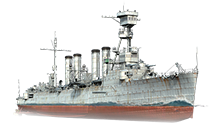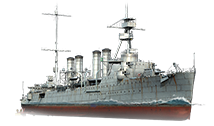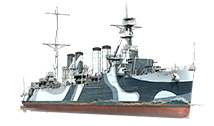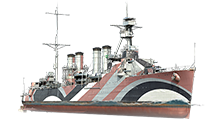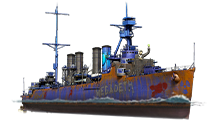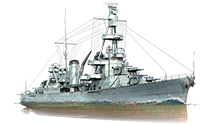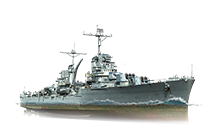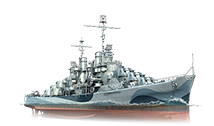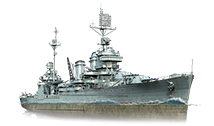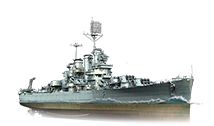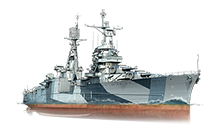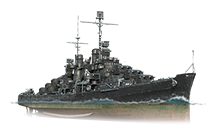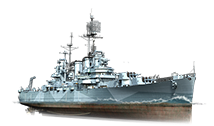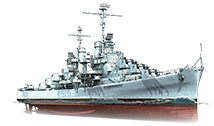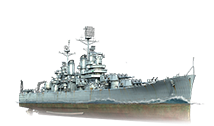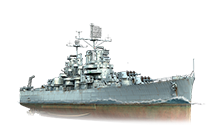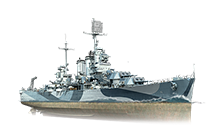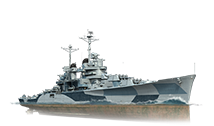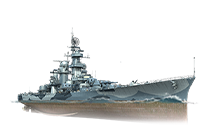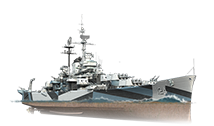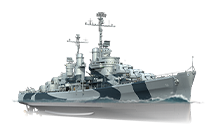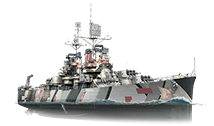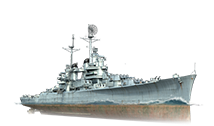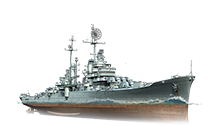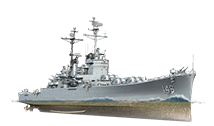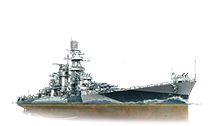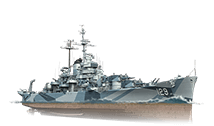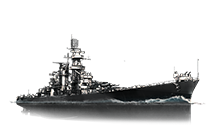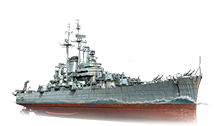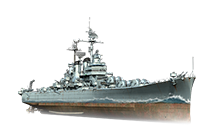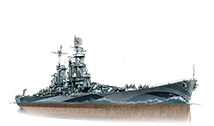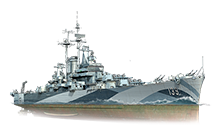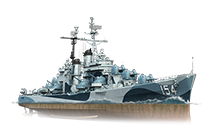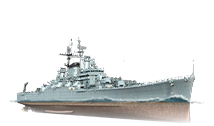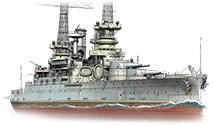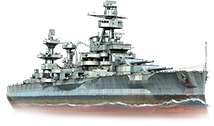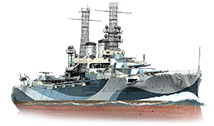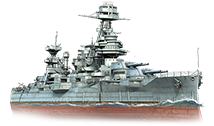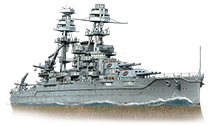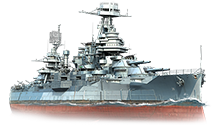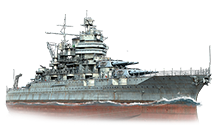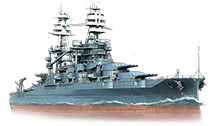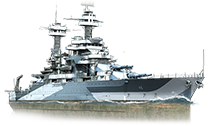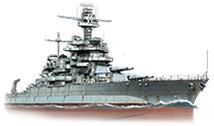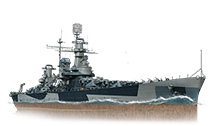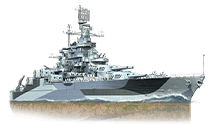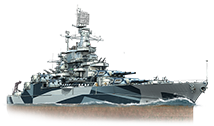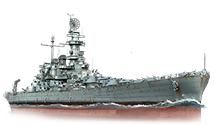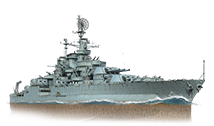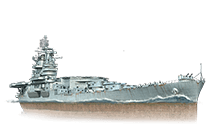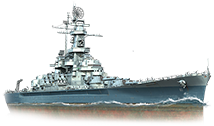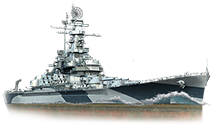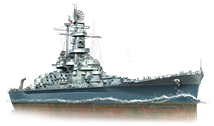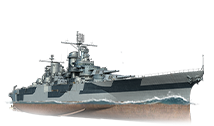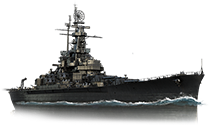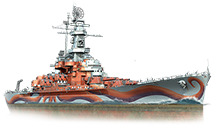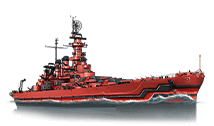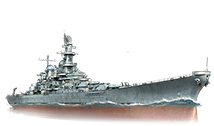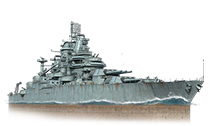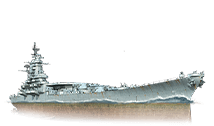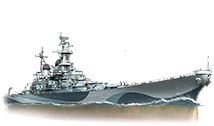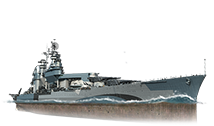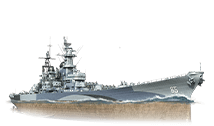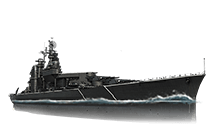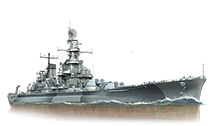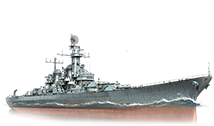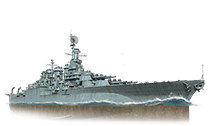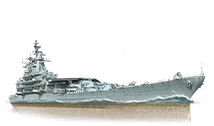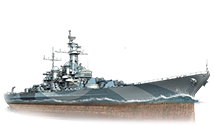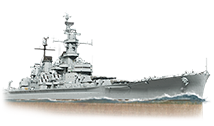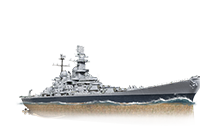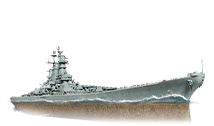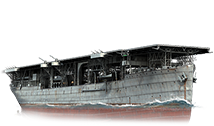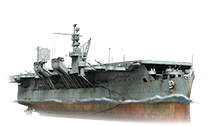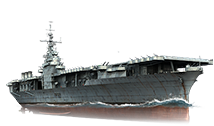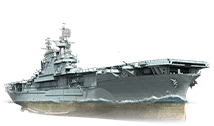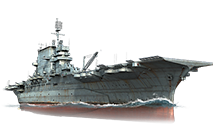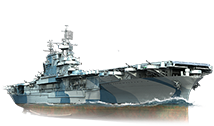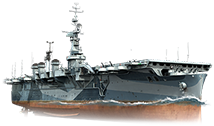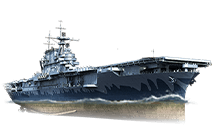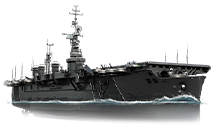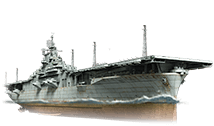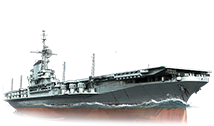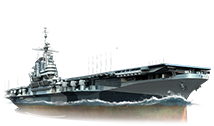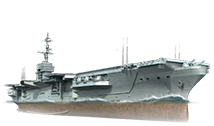Ships of U.S.A.
| Revision as of 13:20, 5 July 2016 Changed protection level for "Ship:Ships of U.S.A." ([Move=Allow only administrators] (indefinite)) | Revision as of 07:29, 24 July 2016 | |||
| Line 2: | Line 2: | |||
| |icon=USS Essex icon.png | |icon=USS Essex icon.png | |||
| |content=Ships fielded by the United States Navy (USN) sport great armour (albeit mostly in an all-or-nothing design), batteries, and anti-aircraft (AA) capabilities, and are less hindered by stock configurations—many were built later and subsequently underwent fewer, less drastic upgrades (unlike Imperial Japanese Navy (IJN) vessels such as the ''Kongo''). Most stock American ships are adequate for their roles, and while fully-upgraded ships perform better, they require little to no change in playstyle. Their torpedoes are disastrously bad, but the real strength of USN ships lies in their ability to get into firefights and slug it out, relying on their superior guns and survivability to see them through. | |content=Ships fielded by the United States Navy (USN) sport great armour (albeit mostly in an all-or-nothing design), batteries, and anti-aircraft (AA) capabilities, and are less hindered by stock configurations—many were built later and subsequently underwent fewer, less drastic upgrades (unlike Imperial Japanese Navy (IJN) vessels such as the ''Kongo''). Most stock American ships are adequate for their roles, and while fully-upgraded ships perform better, they require little to no change in playstyle. Their torpedoes are disastrously bad, but the real strength of USN ships lies in their ability to get into firefights and slug it out, relying on their superior guns and survivability to see them through. | |||
| + | ||||
| Arguably, the United States inherited its naval traditions from the British, from whom they had won their independence. Over the years, the USN encountered various hurdles and successes in its conflicts with the British, French, and Spanish navies. However, a mix of poor economic outlook, isolationist sentiments and post-World War I naval disarmament treaties reduced the effectiveness and preparedness of the USN — yet all of that changed, after Japan's surprise attack on Pearl Harbor. Regarded as an underhanded sneak attack outside the rules of engagement, Pearl Harbor evaporated any reluctance of the American public to go to war. | Arguably, the United States inherited its naval traditions from the British, from whom they had won their independence. Over the years, the USN encountered various hurdles and successes in its conflicts with the British, French, and Spanish navies. However, a mix of poor economic outlook, isolationist sentiments and post-World War I naval disarmament treaties reduced the effectiveness and preparedness of the USN — yet all of that changed, after Japan's surprise attack on Pearl Harbor. Regarded as an underhanded sneak attack outside the rules of engagement, Pearl Harbor evaporated any reluctance of the American public to go to war. | |||
| + | ||||
| With its battleship fleet crippled, the USN decided to turn to its submarines and its fledgling carrier fleet - the very weapons that the IJN had used in their attempt to neutralise the USN Pacific Fleet - and ironically put them to greater effect than the Japanese (who stuck to battleships and the "decisive battle" doctrines), achieving successes in the battles of the Coral Sea, Midway, the Philippine Sea, Leyte Gulf, and Okinawa. While slightly behind their IJN counterparts in the beginning, the USN gradually caught up both qualitatively and quantitatively; virtually every class of vessel being outfitted superior fire control equipment such as radar and ballistics computers; the industrial might of the United States produced large numbers of proven designs (the 175 ships of the ''Fletcher'' class built within the space of less than '''''four''''' years being a prime example) with little unnecessary variation in equipment, so that crew transferred between ships could quickly fill their roles without specialised retraining. The US Navy emerged from World War II as the most powerful navy in the world. | With its battleship fleet crippled, the USN decided to turn to its submarines and its fledgling carrier fleet - the very weapons that the IJN had used in their attempt to neutralise the USN Pacific Fleet - and ironically put them to greater effect than the Japanese (who stuck to battleships and the "decisive battle" doctrines), achieving successes in the battles of the Coral Sea, Midway, the Philippine Sea, Leyte Gulf, and Okinawa. While slightly behind their IJN counterparts in the beginning, the USN gradually caught up both qualitatively and quantitatively; virtually every class of vessel being outfitted superior fire control equipment such as radar and ballistics computers; the industrial might of the United States produced large numbers of proven designs (the 175 ships of the ''Fletcher'' class built within the space of less than '''''four''''' years being a prime example) with little unnecessary variation in equipment, so that crew transferred between ships could quickly fill their roles without specialised retraining. The US Navy emerged from World War II as the most powerful navy in the world. | |||
| Line 15: | Line 17: | |||
| American [[Ship_types_battleship|battleships]] follow more orthodox and consistent designs: while their guns may not be as large and powerful as those of the Japanese, the USN ships make up for it by having more guns that fire more often, giving them unmatched broadside firepower. In spite of inferior firing ranges and speeds, American battleships are capable of absorbing major damage in order to bring their guns to bear—their citadel armour is impenetrable to all but the largest calibre shells (at the cost of having a more lightly-armoured bow and stern). Moving up the tech tree, their mobility progressively improves, and catches up with the Japanese at the Tier VIII ''North Carolina''. The Tier X ''Montana''is the pinnacle of the American battleship line: the evolution of the Iowa battleship design whose construction was cancelled some time after receiving Congressional approval for construction in order to focus more on aircraft carrier production. | American [[Ship_types_battleship|battleships]] follow more orthodox and consistent designs: while their guns may not be as large and powerful as those of the Japanese, the USN ships make up for it by having more guns that fire more often, giving them unmatched broadside firepower. In spite of inferior firing ranges and speeds, American battleships are capable of absorbing major damage in order to bring their guns to bear—their citadel armour is impenetrable to all but the largest calibre shells (at the cost of having a more lightly-armoured bow and stern). Moving up the tech tree, their mobility progressively improves, and catches up with the Japanese at the Tier VIII ''North Carolina''. The Tier X ''Montana''is the pinnacle of the American battleship line: the evolution of the Iowa battleship design whose construction was cancelled some time after receiving Congressional approval for construction in order to focus more on aircraft carrier production. | |||
| ? | Early in the war, naval aviation in the USN lagged behind other navies. Thus, their early [[Ship_types_aircarrier|carriers]] can be painful to use. Their large sizes mean that they can be seen from miles away (the ''Midway'' has the worst concealment value in the game, at an astounding '''''5''''', ''worse'' than the ''Yamato''), and even though they are quite durable with surprisingly strong AA defenses, remaining unspotted or sticking with teammates for protection are recommended. USN fighters dominate the skies at almost every tier and their dive bombers are stronger—American dive bombers historically carried heavier, more powerful bomb loads. With larger, six-plane squadrons, each strike that connects has a greater impact, and with a generous store of spare aircraft (except for the ''Bogue''), losing planes is more affordable. But their carriers are limited to one squadron of torpedo bombers | + | Early in the war, naval aviation in the USN lagged behind other navies. Thus, their early [[Ship_types_aircarrier|carriers]] can be painful to use. Their large sizes mean that they can be seen from miles away (the ''Midway'' has the worst concealment value in the game, at an astounding '''''5''''', ''worse'' than the ''Yamato''), and even though they are quite durable with surprisingly strong AA defenses, remaining unspotted or sticking with teammates for protection are still recommended. USN fighters dominate the skies at almost every tier and their dive bombers are stronger—American dive bombers historically carried heavier, more powerful bomb loads. With larger, six-plane squadrons, each strike that connects has a greater impact, and with a generous store of spare aircraft (except for the ''Bogue''), losing planes is more affordable. But '''all''' their carriers are limited to one squadron of torpedo bombers (except for the ''Saipan''), and are equipped with slow (but oddly stronger with longer range) torpedoes; their loadout options lack versatility, being all-or-nothing options between air superiority or surface attack, and although the default loadouts are now mostly viable, it often means bringing one less squadron into battle; long servicing times for USN aircraft hinder the ability of American carriers to maintain constant presence on the battlefield. | |
| }} | }} | |||
| {{#vardefine:cur_nation|usa}}__NOTOC__[[Category:Ships by nation]] | {{#vardefine:cur_nation|usa}}__NOTOC__[[Category:Ships by nation]] | |||
Revision as of 07:29, 24 July 2016
Arguably, the United States inherited its naval traditions from the British, from whom they had won their independence. Over the years, the USN encountered various hurdles and successes in its conflicts with the British, French, and Spanish navies. However, a mix of poor economic outlook, isolationist sentiments and post-World War I naval disarmament treaties reduced the effectiveness and preparedness of the USN — yet all of that changed, after Japan's surprise attack on Pearl Harbor. Regarded as an underhanded sneak attack outside the rules of engagement, Pearl Harbor evaporated any reluctance of the American public to go to war.
With its battleship fleet crippled, the USN decided to turn to its submarines and its fledgling carrier fleet - the very weapons that the IJN had used in their attempt to neutralise the USN Pacific Fleet - and ironically put them to greater effect than the Japanese (who stuck to battleships and the "decisive battle" doctrines), achieving successes in the battles of the Coral Sea, Midway, the Philippine Sea, Leyte Gulf, and Okinawa. While slightly behind their IJN counterparts in the beginning, the USN gradually caught up both qualitatively and quantitatively; virtually every class of vessel being outfitted superior fire control equipment such as radar and ballistics computers; the industrial might of the United States produced large numbers of proven designs (the 175 ships of the Fletcher class built within the space of less than four years being a prime example) with little unnecessary variation in equipment, so that crew transferred between ships could quickly fill their roles without specialised retraining. The US Navy emerged from World War II as the most powerful navy in the world.
American destroyers playstyle can be summarised as being the biggest in-game pests; their fast-firing guns in quick-turning turrets can continuously rain fire on opponents with impunity while under cover of smoke or vision blockers such as islands (or simply out of vision range)—the Gearing, the crown jewel of USN destroyers, can blanket her targets with more than 120 rounds per minute! Unfortunately, slow shell velocities and incredulously high shell arcs, while allowing you to fire over islands, make it near-impossible to hit anything beyond medium ranges. They also have reasonable AA firepower, allowing them to play the role of escort ship when the need arises, but fire discipline and astute smokescreen usage are required, since gun and AA battery fire can broadcast a ship's position. The US Navy had chronic problems with their torpedoes till late World War II, and this is reflected in-game - lower tier American destroyers, instead of stealthily launching a spread out of visual range, are more often forced to weather fire from their targets' secondary batteries well before they come within torpedo range. However, starting with the Mahan at Tier VII, it is now possible to stealthily launch a salvo, albeit still at shorter ranges than their Japanese counterparts. To put things in perspective, Americans have to wait until their Tier IX destroyer Fletcher before they get a torpedo with a 10km range; the Japanese get their first on their Tier VI destroyer Mutsuki—and the Mutsuki reloads faster!
American cruisers are all about the guns; their primary, secondary, and AA suites are superlative. Foregoing torpedoes after the Omaha at Tier V, they are instead able to lay down an incredible hail of gunfire in almost any direction, due to the fast-firing guns located along the sides of their lower-tier ships, or in their fast-turning turrets at higher tiers. Any enemies—especially destroyers—that come within range of the guns and do not take evasive action are quickly sunk to the bottom of the ocean. Although the Japanese oftentimes have better range and firepower, the Americans have faster turret traverse, conventional layouts and higher rates of fire; the high shell arc (like their destroyer counterparts) is a double-edged sword, with a citadel-hitting plunging trajectory hampered by their unimpressive shell velocities. Their AA batteries easily dissuade aircraft from venturing too close or even approaching if they're not massed together for protection—yet even then, well-timed defensive AA fire will quickly deplete the assets of enemy aircraft carriers. The Des Moines is the very pinnacle of the all-gun cruiser thought that made her one of the best heavy cruisers as she has a very powerful AA suite and main batteries that have unrivaled rate of fire.
American battleships follow more orthodox and consistent designs: while their guns may not be as large and powerful as those of the Japanese, the USN ships make up for it by having more guns that fire more often, giving them unmatched broadside firepower. In spite of inferior firing ranges and speeds, American battleships are capable of absorbing major damage in order to bring their guns to bear—their citadel armour is impenetrable to all but the largest calibre shells (at the cost of having a more lightly-armoured bow and stern). Moving up the tech tree, their mobility progressively improves, and catches up with the Japanese at the Tier VIII North Carolina. The Tier X Montanais the pinnacle of the American battleship line: the evolution of the Iowa battleship design whose construction was cancelled some time after receiving Congressional approval for construction in order to focus more on aircraft carrier production.
Early in the war, naval aviation in the USN lagged behind other navies. Thus, their early carriers can be painful to use. Their large sizes mean that they can be seen from miles away (the Midway has the worst concealment value in the game, at an astounding 5, worse than the Yamato), and even though they are quite durable with surprisingly strong AA defenses, remaining unspotted or sticking with teammates for protection are still recommended. USN fighters dominate the skies at almost every tier and their dive bombers are stronger—American dive bombers historically carried heavier, more powerful bomb loads. With larger, six-plane squadrons, each strike that connects has a greater impact, and with a generous store of spare aircraft (except for the Bogue), losing planes is more affordable. But all their carriers are limited to one squadron of torpedo bombers (except for the Saipan), and are equipped with slow (but oddly stronger with longer range) torpedoes; their loadout options lack versatility, being all-or-nothing options between air superiority or surface attack, and although the default loadouts are now mostly viable, it often means bringing one less squadron into battle; long servicing times for USN aircraft hinder the ability of American carriers to maintain constant presence on the battlefield.